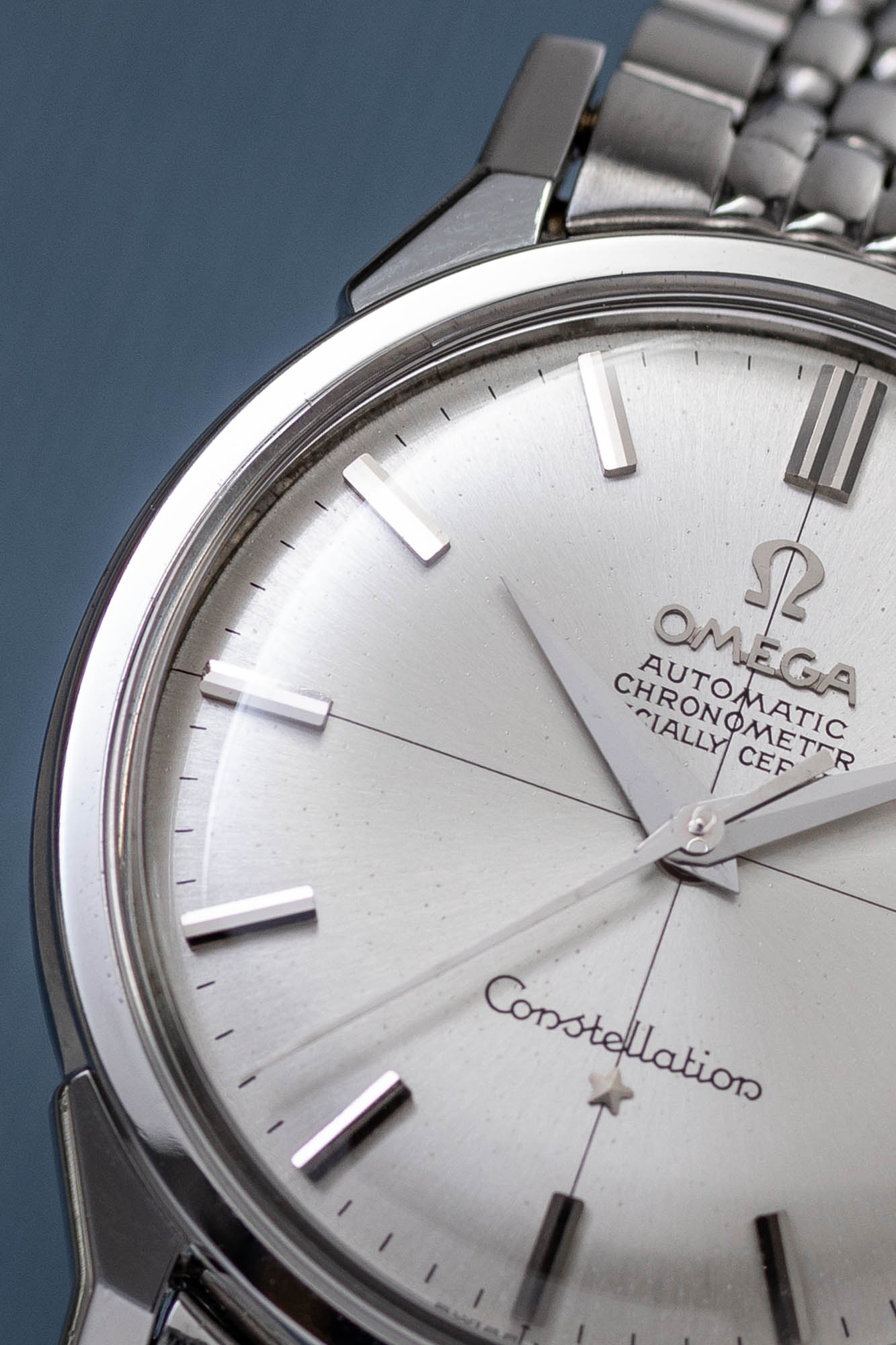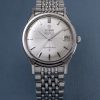Omega Constellation Ref. 168.005
Behold, this immaculate watch!
A very brief history about the Constellation line of Omega: The line was introduced in 1952 and got its name from the depicted observatory on the caseback. The observatory shows eight stars above it that symbolize six first-place awards that Omega earned between the years 1933 and 1952. However, the other two stars symbolize something that is more significant. Omega achieved two chronometer records at the Kew-Teddington Observatory, Omega set world records for precision in every category, the first in 1933 and repeated in 1936.
Here we have an automatic Omega Constellation with a date complication that dates back to 1963 and is executed with a silver sunburst “crosshair” dial. To make things even better, this watch comes on the original beads of rice bracelet, which is in excellent condition.
When you are shooting for the stars, this might be your watch!
We invite you to come and check out this piece at Reestraat 3 Amsterdam
SOLD
Out of stock
Contact us
Got your attention? We’re here to help.
When Omega celebrated its centennial in 1948, it launched its first chronometer-rated wrist watch, the Centenary, to commemorate the event. The watch was an instant hit and in 1952, Omega decided it was time to expand its chronometer efforts. The Constellation was born as its top line of officially chronometer-rated watches.
The Constellation would be easily recognizable through a star on the dial and a caseback featuring an image of the Geneva observatory and eight stars. A nod to the accuracy records Omega set at the Kew-Teddington observatory in the 1930’s.
The first models featured bumper-automatics. A variation on the common free-spinning rotor, where the rotation is limited to 120 degrees, before the rotor hits a spring. This can be felt when handling the watch as a little bump. After four years, these calibers were replaced by free-spinning automatics.
The earlier models from the 1950’s and 1960’s featured the iconic pie-pan dial. The dial would slope down at an angle around its outer perimeter, providing a very cool sense of dimensionality. Since the look is reminiscent of the underside of a pie-pan, a nickname was quickly born. Halfway through the sixties, flat-dial versions slowly took over. The pie-pan remains a highly sought-after Constellation variant today.
In the 1970’s, all sorts of creative case shapes and integrated bracelets were launched. Different sizes were introduced for men and women. Countless dial variations were sold. Steel, gold and gold-cap versions can be found.
The Constellation is clearly Omega’s high end range. More effort was put into finishing techniques and accuracy. Where the Seamaster and Speedmaster lines were more about utility, the Constellation was (and still is) a tour-de-force in watchmaking precision.
At AWCo we put the safety of our shipments upfront at all times. Therefore, we ship all our packages insured.
We strive to promptly handle packages to minimize delays. Delivery times begin from the day of dispatch. While we make every effort to ensure smooth delivery, we cannot be held responsible for delays caused by destination customs, local duties, taxes, or lost items during transit.
Certainly, we understand that overloaded mail-order companies can also contribute to potential delays in the delivery process. Despite our best efforts, external factors beyond our control may affect shipping times. Rest assured, we remain committed to providing timely service and will work diligently to ensure your order reaches you as promptly as possible. For any inquiries or updates, feel free to reach out to us at info@awco.nl. Your satisfaction is our priority.
| Brand | Omega |
|---|---|
| Model | |
| Reference | 168.005 |
| Year of production (circa) | 1963 |
| Material | Steel |
| Crystal | Acrylic |
| Dial color | Silver |
| Movement | Automatic |
| Diameter | 34 mm |
| Bracelet/strap: | Steel |
| Lug Width | 18 mm |
| Set Content | Watch only |






